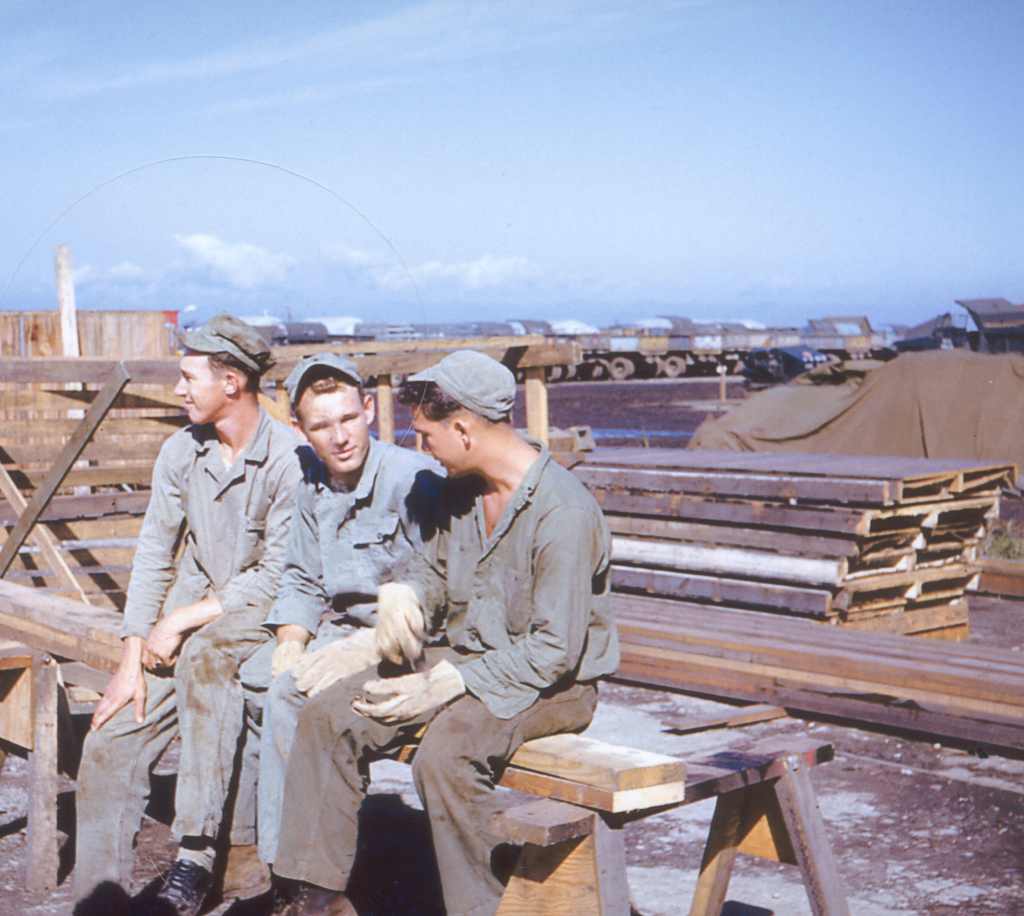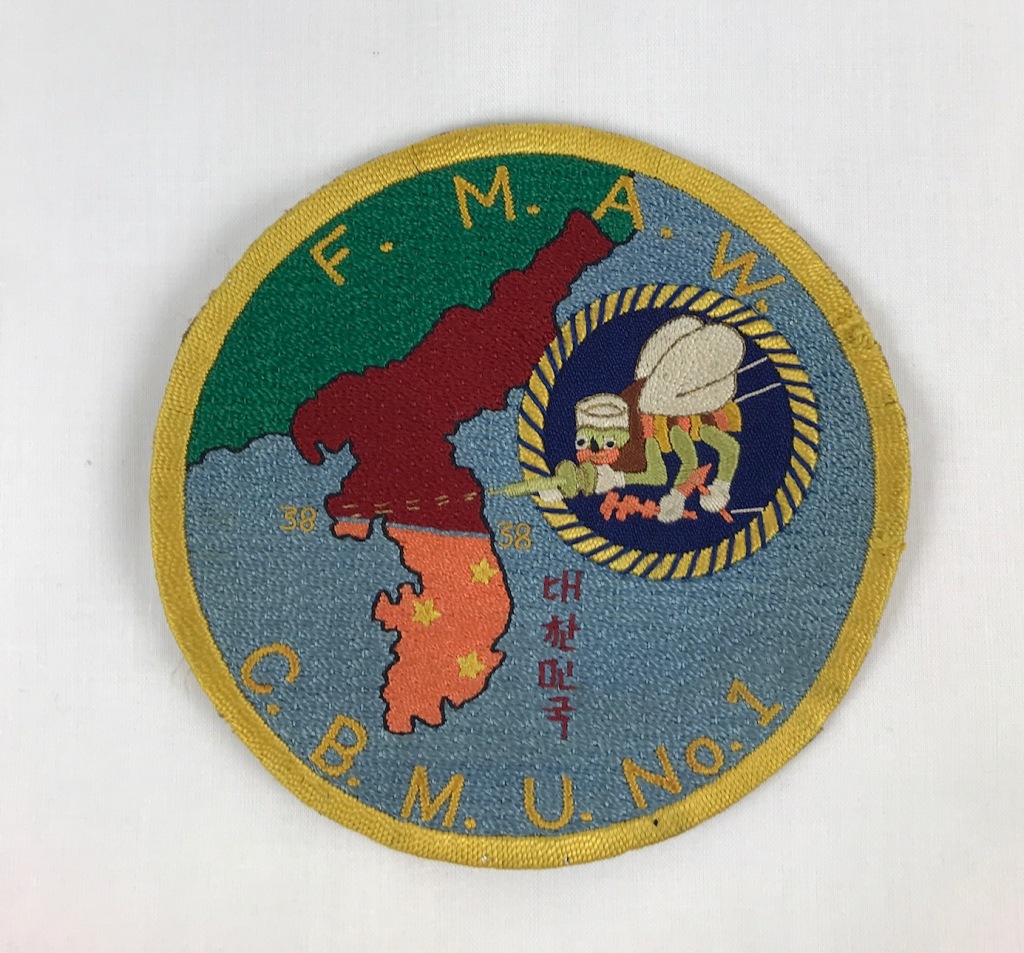After WWII, Seabee numbers were reduced from their war time high of approximately 300,000 to less than 3,000. Uniform regulations were being reviewed and there was a push to simplify Navy uniforms. Between 1948 and 1950, there is no evidence that Naval Construction Force had any special designation on any of its uniforms. As part of the simplification, Seabees were wearing the US Navy’s dungarees which did not stand up to the work load!
During this same period, the Chief of the Bureau of Yards and Docks, Rear Admiral Joseph Jelly, requested that the Naval Construction Force be allowed to use special uniform regulations. The Navy allowed certain rates to wear specialized clothing suited to the job. RADM Jelly sought approval for a uniform more suited to Seabee working conditions than the Navy’s traditional dungarees. He got the approval he wanted in sometime after July 1950.
By late 1950 or early 1951, active duty Seabees began wearing a dark olive drab green uniform as their utility uniform, with substantial numbers of Seabees regularly wearing the USMC HBT Coveralls. Reserve Seabees wear issued dungarees. This can be most easily substantiated in photographs of Seabees working at various locations throughout the Pacific including: Atsugi, Japan; Cubi Point, the Philippines and Korea from late 1950 thru 1953.

By the end of 1951, the special clothing request was codified in NAVPERS 15665 and to one sentence in the 1951 Uniform Regulations Chapter 1 Section 2 Article 0116. Special Clothing (page1-5). In the years following, Naval Construction Force manuals, Naval Construction Force rating manuals and Seabee Combat Handbooks included the specifications for wearing of a specialized uniform, but there was no regulation or instruction for a specialized unit insignia. It was at this time that the first Seabee unit patches were created and used on non-regulation gear.
